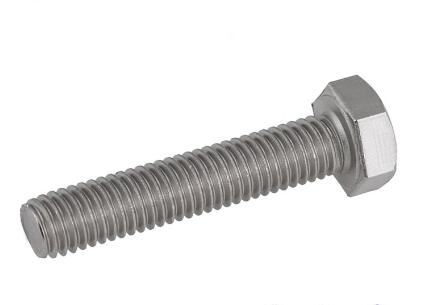Unveiling the Versatility: Stud Bolts vs. Regular Bolts – What Sets Them Apart
2023-11-28
Introduction:
In the world of fasteners, bolts are the unsung heroes that hold our structures together. However, within this category, there's a special player known as the stud bolt, which brings its own set of advantages and use cases. In this blog, we'll delve into the intricacies of stud bolts, exploring their unique characteristics and highlighting the differences that set them apart from regular bolts.
Defining Stud Bolts:
A stud bolt, also referred to simply as a "stud," is a type of threaded fastener designed for specific applications, primarily in situations where a bolted joint requires more than just a single threaded connection. Unlike regular bolts, a stud bolt features threads on both ends, allowing it to be threaded into a tapped hole and then secured with a nut on the opposing end.
Key Characteristics of Stud Bolts:
1. Double-Ended Thread:
The most distinctive feature of a stud bolt is its double-ended threading. This design facilitates a more flexible and robust fastening solution, enabling components to be securely held in place on both ends.
2. Versatility in Assembly:
Stud bolts offer versatility in assembly, especially in scenarios where one side of the connection may be difficult to access. By threading the stud into one component and securing the other end with a nut, the assembly process becomes more manageable.
3. Easier Alignment:
Stud bolts can assist in aligning components during assembly. When a stud is threaded into one component, it serves as a guide for aligning the second component, making the overall process more straightforward.
4. Reduced Risk of Damage:
Since stud bolts are threaded into one component and secured with a nut on the other end, there is less risk of damaging the threads during assembly. This can be advantageous, especially when dealing with delicate or easily damaged materials.
5. Enhanced Load Distribution:
Stud bolts contribute to improved load distribution. The double-ended threading allows for a more even distribution of forces, reducing the risk of localized stress on the components being fastened.
Differences from Regular Bolts:
1. Threaded on Both Ends:
While regular bolts typically have threads on one end, stud bolts have threading on both ends. This unique design allows for increased flexibility in various assembly scenarios.
2. Nut Secured on One End:
The threaded end of a stud bolt is secured with a nut, distinguishing it from regular bolts where the threads penetrate the entire length of the bolt.
3. Alignment Assistance:
Stud bolts are often employed to aid in the alignment of components during assembly, a feature not commonly associated with regular bolts.
Conclusion:
Stud bolts, with their double-ended threading and versatile applications, bring a unique set of advantages to the world of fasteners. While regular bolts excel in many situations, stud bolts offer a specialized solution for scenarios where ease of assembly, alignment, and load distribution are paramount. Understanding the differences between these two types of fasteners empowers engineers, builders, and DIY enthusiasts to choose the right tool for the job, ensuring that structures are not just fastened but securely and precisely assembled.



